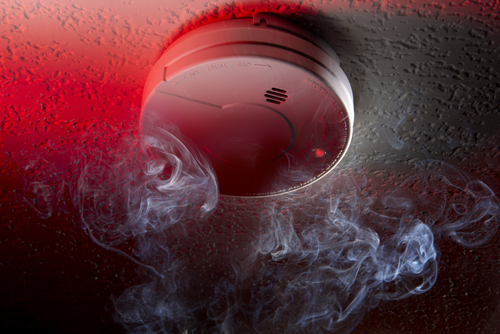The National Fire Protection Association (NFPA), the official sponsor of Fire Prevention Week for 99 years, has announced “Learn the Sounds of Fire Safety” as the theme for the 2021 event, running Oct. 3-9. From beeps to chirps, this year’s campaign works to better educate the public about the sounds smoke alarms make, what those sounds mean, and how to respond to them.

“Smoke alarms have played a leading role in reducing fire death rates over the past 40 years, but we still have more work to do in maximizing their effectiveness,” says Lorraine Carli, NFPA Vice President of Outreach and Advocacy.
According to the latest NFPA “Smoke Alarms in the U.S.” report, working smoke alarms in the home reduce the risk of dying in a reported fire by more than half (55%). However, almost three out of five home fire deaths occur in homes with no smoke alarms (41%) or smoke alarms that failed to operate (16%); missing or non-functional power sources, including missing or disconnected batteries, dead batteries, and disconnected hardwired alarms or other alternate current (AC) power issues, are the most common factors when smoke alarms fail to operate.
“When the smoke alarms in your home beep or chirp and you can’t figure out why—or how to make them stop—it can be frustrating. All too often, that frustration leads people to remove the batteries from their alarms or dismantle them altogether,” says Carli. “These actions place people at serious risk in the event of a home fire.”

NPFA says this year’s Fire Prevention Week theme, “Learn the Sounds of Fire Safety,” helps people better understand the reasons smoke alarms may sound and the know-how to effectively address them, helping ensure that smoke alarms remain in working order. The campaign also addresses special considerations for the deaf and hard of hearing, along with information about carbon monoxide (CO) alarms.
According to NFPA, key messages for “Learn the Sounds of Fire Safety” include:
- When a smoke alarm or CO alarm sounds, respond immediately by exiting the home as quickly as possible.
- If your alarm begins to chirp, it may mean that the batteries are running low and need to be replaced. If the alarm continues to chirp after the batteries are replaced, or the alarm is more than 10 years old, it is time to replace the alarm.
- Test all smoke and CO alarms monthly. Press the test button to make sure the alarm is working.
- If there is someone in your household who is deaf or hard of hearing, install bed shaker and strobe light alarms that will alert that person to fire.
- Know the difference between the sound of a smoke alarm and a carbon monoxide alarm—three beeps for smoke alarms; four beeps for CO alarms.
Notably, although this year’s “Learn the Sounds of Fire Safety” theme focuses on homes, NFPA also offers helpful resources related to other facilities, including high-rise buildings, college campuses, and hotels here.
NFPA has been the official sponsor of Fire Prevention Week since 1922. According to the National Archives and Records Administration’s Library Information Center, Fire Prevention Week is the longest-running public health and safety observance on record. The President of the United States has signed a proclamation declaring a national observance during that week every year since 1925.
